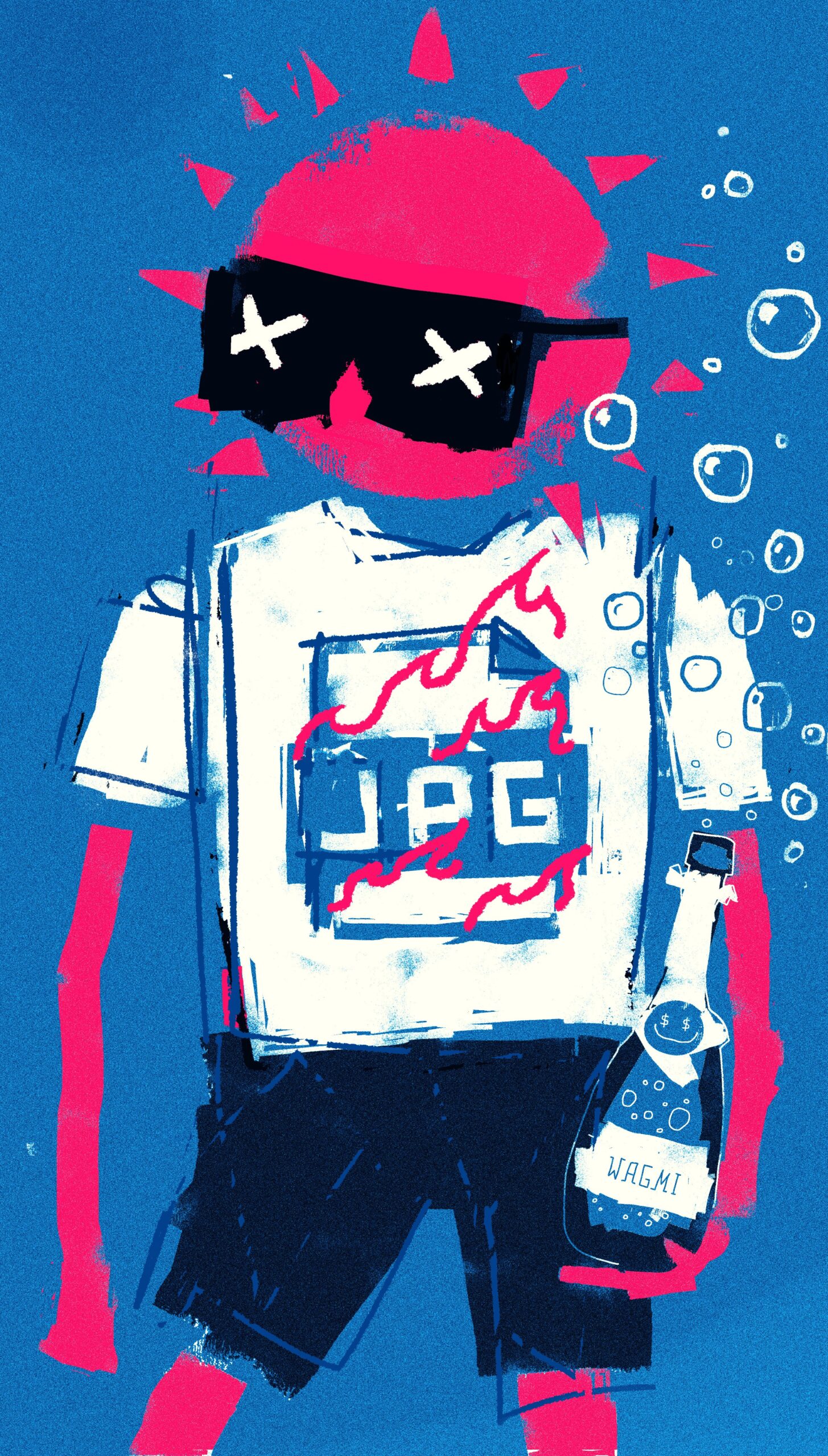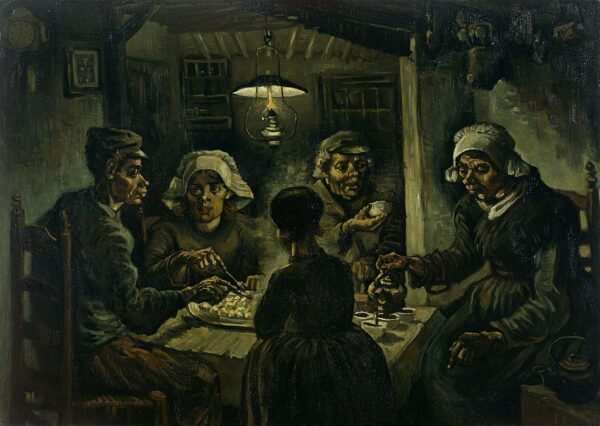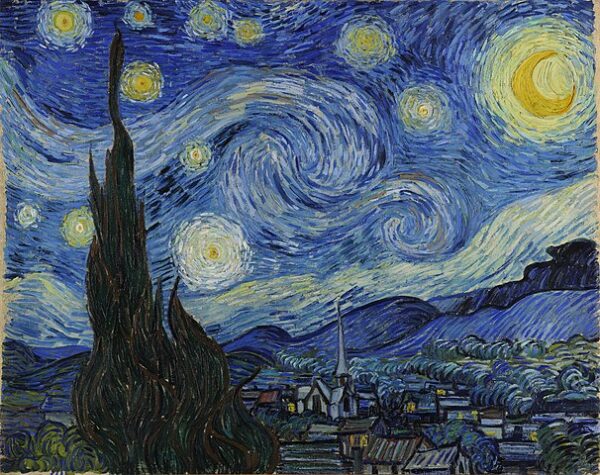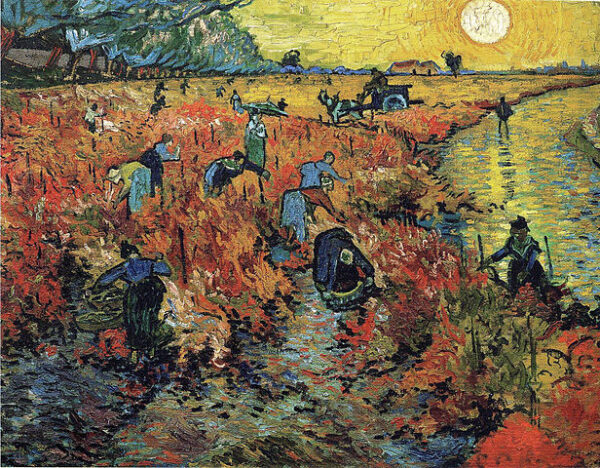A Tale of Two Artists: Van Gogh and XCOPY
by Sabrina Khan
It is rare to meet someone who does not know Vincent Van Gogh. The ubiquity of his swirling starry scape resonates in the hearts of millions.
So, it is startling to imagine that the artist himself knew nothing of this posthumous fame. In his lifetime, he was virtually unknown and impoverished, floating through a morose and tortured existence. This travesty was due largely in part to the fact that in Van Gogh’s world, he had no means to get his own work out there for the world to see. No such mechanism was in place that favored the artist and allowed for the self promotion and widespread distribution that would allow him to know his own fame in his lifetime, though he produced a staggering 2100 pieces.
A parallel exists between Van Gogh and London based artist XCOPY, who, like Van Gogh, is highly prolific, churning out gifs for the past decade, when his audience was only a niche group of followers. But the fates of the two artists differ because of the innovations and technology that are in place in our world today. The mechanisms in place which exist in the digital art revolution of today, allow for XCOPY to reach great heights and enjoy the ascent, anonymous and very much alive.
Van Gogh’s Artistic Voice is as Severed from Him as His Ear
Vincent Van Gogh became an artist proper at age 27. For the next decade of his life, on a steady diet of coffee and cigarettes, he dedicated himself to painting.
In 1885, a Paris art dealer expressed interest in his work. His brother, Theo, who had taken on the role of Van Gogh’s promoter, said that Van Gogh’s piece was too dark and would not be suitable for exhibition. Though Van Gogh believed “The Potato Eaters” was the best work he had done up to that point, there was no way for him to promote it.
In fact, Van Gogh had no voice as an artist, and he had to rely upon his brother’s own uneducated tastes to promote his work. Thus, the piece failed to be seen in the way Van Gogh had wished.
Escape to Arles
Frustrated by the bustle of city life, Van Gogh retreated to Arles in the South of France. Inspired by the golden light of the countryside, his paintings grew brighter and more prolific, as he encountered the most creative period of his life, producing more than 200 paintings.
It was in his Yellow House that Van Gogh wanted to start up an artistic community, for he knew the secret to success for an artist was in the connections he developed. Having given up all his other career pursuits, he committed his life to painting and his livelihood depended on selling his work. In a letter to his brother Van Gogh wrote almost prophetically:
“I can do nothing about it if my paintings don’t sell. The day will come, though, when people will see that they’re worth more than the cost of the paint and my subsistence, very meagre in fact, that we put into them.”
Van Gogh knew what we all know today, that one cannot monetize one’s craft without an audience to consume it. One can be an artist in private, but to be an artist recognized by the world, if such is the goal of art, to move, to teach, to inspire, then one must reach one’s tentacles out into society. It was in this spirit that he planned to create an artist’s commune.
However, the first artist who arrived would unfortunately be the last, as disputes between them led to Van Gogh charging at his guest with a razor blade, one which he later used to sever his own ear, before gifting it to a prostitute in a nearby brothel. In his isolated home, far from the city, he had no connections with other artists, nor with a community of art lovers. In a solitary gloom did some of the finest pieces of art emerge, unseen.
The “Red-Headed Madman” Loses His Mind Only to Find His Artistic Genius
Unsurprisingly, after his ear severing episode, he was admitted to the Saint-Paul-de-Mausole asylum, and it was within the barred window cells of this sanctuary that he painted one of his masterpieces: Starry Night. Cloistered in his cell, gazing through the window bars at the brilliant night sparkling above a hushed countryside, stirred by the light of a thousand stars, his soul shrieked as the fervor and fever of all of his unfulfilled dreams inspired the production of a painting that carried him to the great heights of his artistry and genius, a piece that endures to this day.
Upon his release from the asylum, his final year of life saw the sale of one painting, The Red Vineyard, and a bit of twittering about his art began as he was featured in two art exhibitions and won some praise from Claude Monet. In a letter to his brother Van Gogh writes:
“I feel a power in me that I must develop, a fire that I may not put out but must fan, although I don’t know to what outcome it will lead me, and wouldn’t be surprised if it was a sombre one.”
“The Sadness Will Last Forever”– Van Gogh’s Last Words
A somber one, indeed, as all was cut short, when in July 1890, he walked into a wheat field and shot himself in the chest. Stumbling home, he stayed in his room and smoked a pipe for two days before he died. In many ways, his life as an artist was a tragic journey of a genius unrecognized, his glory only understood posthumously.
After his death, his sister-in-law, Jo, became heiress to his entire collection. Wishing to promote him, she opened a guest house in a city rife with artists and collectors and began making connections that helped her enter the art world. She submitted Van Gogh’s work to an exhibit in Amsterdam and published all of his private letters. The combination of his fine work as well as his personal story of a tortured, poetic soul appealed to the public imagination and his fame blossomed.
After Jo’s death, Van Gogh’s nephew championed the funding of the Van Gogh museum in Amsterdam. Today, Van Gogh’s paintings are amongst some of the highest selling paintings in history: In 1990, his “Portrait of Dr. Gachet” sold for $82.5 million at Christie’s.
Though famous today, during his lifetime, he was unobserved by the world, a spark of light upon the vast golden wheatfields he loved to paint, which expressed his loneliness with the eloquence that his words could not.
The Van Goghs Of Our Modern World
That brings us to today: we have artists who have beginnings very much like Van Gogh, but our world is different from his world. There is a shaking of the foundations for artists now, and mechanisms in place that are beneficial for artists in a way the old world did not offer in Van Gogh’s lifetime.
On tumblr, XCOPY made gifs with unrelenting frequency. In March 2018, XCOPY wrote: “Today I sold my first gif for £1. Nothing can stop us tumblr.”
There was not yet a frenzy or feverish desire for this type of art form, nor a place where it could be sold or shared easily, except for Tumblr. But that did not stop the tempest of work that poured from the mind of this prolific artist, nor did it thwart his conviction that what he was doing had a bright future on the horizon.
On his Tumblr, February 2019, XCOPY wrote: “Day 3 trying to give away crypto art on tumblr.”
Similar to how Van Gogh used to give away his own paintings to various friends and merchants in town in exchange for food and just to get eyes on his art, XCOPY was doing the same only a few years ago by gifting people pieces of digital art and offering enticing 30% off coupon codes to try to sell his pieces and gather as many eyes as possible on his work.
It is noteworthy to see the parallel here between two great artists before they were great and the way in which their art was received before their fame. Van Gogh painted “Portrait of Dr. Felix Rey” as a thank-you present to his physician, but the doctor, thinking it to be a horrifying product of Van Gogh’s mental illness, accepted it politely but used the painting to cover up a hole in his chicken coop. Today that painting is worth over 50 million dollars.
Similarly, XCOPY gave away so many of his pieces that may have been overlooked or dismissed or seen as simply inaccessible digital files that their owners did not know what to do with. Great art simply sat and patched up holes in the family chicken coop or gathered digital dust.
A World That Champions the Artist
But here is where the differences in their worlds really come into play to alter the destinies of these artists.
With only a one month hiatus, for ten years straight, XCOPY produced his gifs, the phantasmagorical, hallucinogenic creations that shiver and spasm upon the screen, and explore themes of death, dystopia, and apathy. With a persistence that was both prophetic and fueled by the fire of his own passion, XCOPY never stopped making art.
January 2021: “Is tumblr ready for crypto art yet?”
Once the world was hungry for this type of art, XCOPY had a bounty of it to share with ease, reaching audiences all over the world. With a shift in technology and the explosion of NFTs in the digital world, the perfect platform presented itself for him to make his work accessible and even more valuable given its historical origins in the timeline of digital art.
His iconic status as an original crypto artist combined with his gift as an illustrator that are brought to life with exquisite motion aesthetics fueled the fire of his meteoric rise. One of the most famous crypto artists living, his pieces are some of the highest selling NFTs, enjoying a take-off that is dizzying in its swiftness.
Originally minted in 2018, “Right-click and Save as guy” sold for $90, and just three years later, sold for $7 million, a great leap from his first sale of just over a dollar a few years ago.
Two Great Artists, Two Different Worlds
The parallels are striking, two great artists living in two eras, but there is a difference in that the second enjoys his fame in this lifetime. Both pioneered different kinds of art revolutions, both in subject and style. But where one never lived to see a day of his legacy’s brilliant flame and died a sad, miserable, impoverished genius who never knew how his art stoked the fires in a million souls, the other is soaring to great heights and has the artistic voice to reach out to his collectors and fans with the power to promote his own work.
The technology in place and the expanding digital metaverse has set up a near Utopian society for artists to flourish, to share their work, to promote it in their own way, and to reach far and wide an audience of which hitherto undreamed.

summer.jpg
Both Van Gogh and XCOPY knew this: The trick about the survival of great art is that it needs the public to make a stir, a commotion; the art must thrill the people and also hold them in its thrall. In its own quiet darkness, a piece of art may be great, but to serve its purpose, to move, teach, inspire, and endure, it must be lifted by the steam and roar of an eager audience that will preserve the artworks’ legacy with the sheer force of enthusiasm.
***
Acknowledgments: Thank you to XCOPY for answering my questions about his work and career. Special thanks to Fred Wilson and punk6529 for their helpful comments and suggestions!







